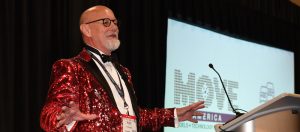First things first: HAPPY NEW YEAR!!!
Now, back to business: We are now past the proposal stage on our solar panel system. An on-site survey was performed, giving SolarCity the first real data on our roof layout and orientation. The resultant changes to the design reduced expected output of the array by 45%, to 9,673 kWh per year. SolarCity reduced the cost of the system (both down payment and monthly payment) by the same percentage.
At roughly 12.8 kWh needed to completely charge each Chevy Volt, the system output is 329 kWh per year more than the cars would require, if each was charged once a day. Some days, we may not drive one of the EVs, lessening their demand, but on other days we charge more than once. I had hoped to offset more of our energy usage and am mildly disappointed with this design. Why the large shortfall from the final proposal to the actual design? I think it mainly is due to all the vents (plumbing, heat exhaust from water heaters and furnace, attic vents, etc…). Once the technician mapped our exact roof configuration, these items, which cannot have a solar panel over them, caused a substantial reduction in the number of panels (32 instead of the proposed 51). The image below shows the planned layout. I believe there are opportunities to increase the number of panels and therefore the system’s output. The green shaded roof surfaces face East or South and have no panels planned for them. One reason for this may be to help us get approval from our neighborhood association, especially since one of these roof sections faces the street. Although a homeowner’s association usually cannot prohibit installation of solar panels, the law states that if the neighborhood is still under development, the HOA can prohibit them. In my estimation, this caveat was created to ease the fears of developers who think prospective home buyers may be turned off by the appearance of solar panels on existing homes. We want to be good neighbors, so we’ve been planning all along to get approval from the HOA, which is currently controlled by the developer of the subdivision.
We want to be good neighbors, so we’ve been planning all along to get approval from the HOA, which is currently controlled by the developer of the subdivision.
I have asked SolarCity to take another look at the design to see if there is a way to increase system output. Are there more efficient panels we could employ? Could we use the roof sections mentioned above? It also looks like there could be room for one more panel on the Southern-most West facing roof section, near where the text “MP1” appears on the plan.
I’m also troubled by the news of electric utility companies trying to end the practice of buying electricity from homeowners who have solar panels. As solar adoption becomes more common, I expect more of these companies, in an effort to survive without adapting to the changing times, to fight. I consider this to be short-sighted. This is similar to video rental stores competing with on-demand cable movies or services like Netflix, Hulu, etc, or the music industry fighting Apple and iTunes. I understand the companies want to survive, but these recent examples should show them they cannot resist the tide of change, over the long haul. They will have to adapt or die. These fights undermine the confidence of prospective adopters of solar energy (like me) in the economic assumptions used to justify the cost of the systems. Imagine if we put up this solar panel array and our local electricity provider stops buying the excess electricity we generate. We charge our Volts mostly after sunset, so if our house didn’t use all the energy generated by the system, we’d be giving away electricity rather than offsetting our usage during the night. The only way I see around that eventuality, would be to add energy storage (batteries) to the mix so that we use all our solar panel system’s energy and only access the grid for energy usage beyond our generating capacity. Energy storage is very costly, and having to do this would remove any financial motive for adopting solar energy. As we’ve seen from my time working for Green Mountain Energy, the average American is not ecologically committed enough to do this, so the residential solar energy industry would see sharp losses in consumer interest in their products. Financially, we might even get to a point where we could not afford to do this.
SolarCity may be able to increase the output of the system, but they cannot allay these concerns. We will be signing up for twenty years with no real guarantee that the assumptions we used to justify the purchase will prove to have been valid. Twenty years is a long time to commit. We will probably move forward as we are early adopters of technology and very, very concerned about the threat of global climate change. When (not if) the world starts to see severe enough effects of climate change, I believe the government will do what it can to grow residential renewable energy generation. The road to the future may be bumpy, but time is on our side as far as financial viability of this decision. Time is not on our side when it comes to halting the damage of climate change.
Stay tuned. I’ll keep you updated on developments.


Comments